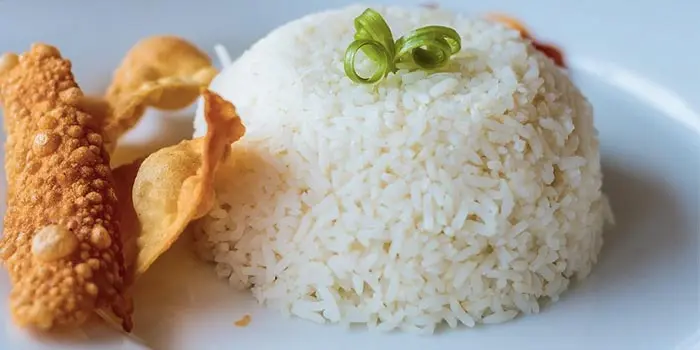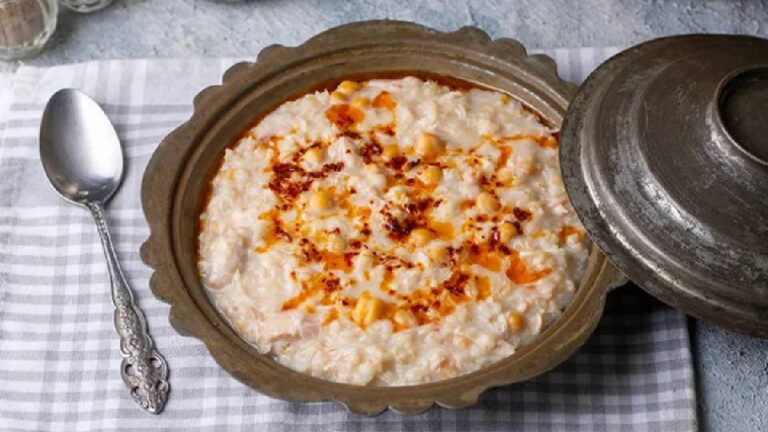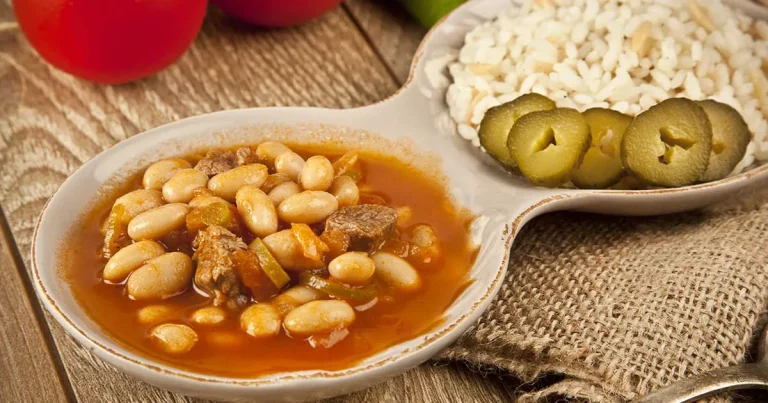Master the Pilaf Turkish Rice: Authentic Turkish Rice Dish Recipe
Are you a food enthusiast who loves exploring new cuisines? Then you must try the traditional Turkish rice dish, pilaf. This dish is a staple in Turkish cuisine and is known for its unique flavor and cultural significance.
In this section, we will explore the rich flavors and cultural significance of pilaf Turkish rice. We will also provide you with an authentic pilaf recipe that captures the essence of Turkish cuisine, so you can master this delicious dish and impress your family and friends.
Key Takeaways:
- Pilaf Turkish rice is a traditional dish in Turkish cuisine.
- Pilaf is known for its unique flavor and cultural significance.
- In this section, we will provide an authentic pilaf recipe.
Understanding Turkish Rice: A Staple in Turkish Cuisine
If you’re a fan of Turkish cuisine, you’re likely familiar with the beloved dish of pilaf Turkish rice. But what exactly is Turkish rice, and why is it such an essential component of Turkish cuisine?
First and foremost, it’s important to understand that the term “Turkish rice” doesn’t refer to a specific type of rice. Rather, it’s a term used to describe the way rice is prepared in Turkish cuisine.
Pilaf Turkish rice is a staple in Turkish cuisine and is featured prominently in countless recipes. It’s typically made by cooking rice with a mixture of butter or oil, onions, and a variety of spices and herbs.
The History and Significance of Pilaf Turkish Rice
Pilaf Turkish rice has been a staple in Turkish cuisine for centuries, with a rich history that dates back to the Ottoman Empire. It was originally served to royalty, but eventually became a dish enjoyed by people from all walks of life.
Today, pilaf Turkish rice is considered a national dish of Turkey and is often served at special occasions and celebrations. It’s a dish that brings people together and represents the warmth and hospitality of Turkish culture.
The Different Types of Turkish Rice Used in Pilaf
While there’s no one “Turkish rice” variety, there are several types of rice commonly used in pilaf recipes.
| Rice Type | Description |
|---|---|
| Basmati Rice | A long-grain rice with a distinct aroma and nutty flavor |
| Baldo Rice | A medium-grain rice that’s slightly sticky when cooked |
| Calrose Rice | A short-grain rice that’s commonly used in Turkish sushi and other rice dishes |
Depending on the recipe and regional variations, different types of rice may be used to achieve the desired flavor and texture.
Why Pilaf Turkish Rice is Such a Beloved Dish
Pilaf Turkish rice is beloved for its rich flavors and versatility. It can be served as a side dish or as a main course, and can be customized with a range of different spices and herbs to suit individual tastes.
Additionally, pilaf Turkish rice is not only delicious but also nutritious. It’s a great source of fiber and protein and is a low-fat, gluten-free option that can be enjoyed by people with a range of dietary needs.
Overall, pilaf Turkish rice is a dish that captures the essence of Turkish cuisine. Its rich flavors, cultural significance, and versatility make it a beloved dish that’s sure to impress.
The Perfect Pilaf Recipe: Step-by-Step Guide
Creating the perfect Turkish rice pilaf requires proper technique and attention to detail. Follow our step-by-step guide below to make an authentic pilaf that captures the rich flavors of Turkish cuisine.
- Prepare the rice: Rinse 2 cups of Basmati or long-grain Turkish rice in cold water until the water runs clear. Soak the rice in cold water for at least 30 minutes. Drain the rice and set aside.
- Sauté the onions: In a large skillet or saucepan, melt 4 tablespoons of unsalted butter over medium heat. Add 1 finely chopped onion and sauté until translucent.
- Add the rice: Add the drained rice to the skillet and stir until the rice is well coated in the butter and onions. Sauté for 2-3 minutes until the rice turns translucent.
- Add the liquid: Pour in 3 cups of hot chicken or vegetable broth. Add 1 teaspoon of salt and stir to combine.
- Cook the rice: Bring the mixture to a boil, then reduce the heat to low and cover the skillet with a tight-fitting lid. Cook for 18-20 minutes until the rice is tender and the liquid has been absorbed.
- Fluff and serve: Remove the skillet from the heat and let it sit, covered, for 5 minutes. Fluff the rice with a fork and serve hot.
Enjoy your perfectly cooked Turkish rice pilaf as a side dish or as the main course. Don’t be afraid to experiment with different spices or add-ins to make the dish your own!
Variations of Turkish Rice Pilaf: Exploring Orzo and Butter Rice
Turkish rice pilaf is a versatile dish with various delicious variations. Two popular versions include orzo Turkish rice and Turkish butter rice.
Orzo Turkish Rice
In this variation, orzo pasta is added to the dish, creating a delightful texture and flavor. To prepare orzo Turkish rice, simply substitute a portion of the rice with orzo pasta.
| Ingredients | Instructions |
|---|---|
| Rice | Cook rice according to the instructions in the pilaf recipe. |
| Orzo pasta | Cook orzo pasta separately and combine with the cooked rice before serving. |
| Seasonings | Add your desired seasonings to the orzo rice mixture and enjoy! |
Turkish Butter Rice
This variation of Turkish rice pilaf features a rich and creamy flavor profile, making it a crowd-pleaser. To prepare Turkish butter rice, follow the pilaf recipe, substituting butter for some of the oil or using a combination of both.
| Ingredients | Instructions |
|---|---|
| Rice | Cook rice according to the instructions in the pilaf recipe. |
| Butter | Use a combination of oil and butter or substitute butter for some of the oil used in the recipe. Heat butter in a separate pan and add it to the cooked rice before serving. |
| Seasonings | Add your desired seasonings to the butter rice mixture and enjoy! |
Experiment with these variations and find what works best for you. They are both easy to make and add a touch of uniqueness to the classic Turkish rice pilaf.
Enhancing Turkish Rice with Vermicelli: A Flavorful Twist
If you’re looking to take your Turkish rice pilaf to the next level, consider adding vermicelli to the mix. This thin, spaghetti-like pasta adds a unique texture and flavor to the dish, elevating the overall experience.
To incorporate vermicelli into your pilaf, follow these simple steps:
- Begin by toasting the vermicelli in a pan with a bit of butter or oil, until it turns a golden brown color. This step is important as it enhances the flavor of the vermicelli.
- Next, add the rice and other ingredients to the pan, along with water or broth. Be sure to adjust the water quantity accordingly, as the vermicelli will also absorb some liquid as it cooks.
- Cook the pilaf as you normally would, ensuring that the vermicelli is fully cooked and the rice is fluffy.
- Once the pilaf is done, let it rest for a few minutes before fluffing it with a fork.
Adding vermicelli to your Turkish rice pilaf is a simple yet effective way to create a dish that is both visually pleasing and bursting with flavor. Give it a try and see how it transforms your pilaf recipe.
Tip: If you’re short on time or don’t have vermicelli on hand, you can also use broken-up pieces of angel hair pasta as a substitute.
Exploring Spices: Key Ingredients in Turkish Rice
Spices are an integral part of Turkish rice, adding depth and complexity to the flavor profile. Understanding the role of spices in Turkish cuisine is essential for creating a well-rounded pilaf.
The following are some of the most commonly used spices in Turkish rice:
| Spice | Flavor Profile |
|---|---|
| Cumin | Earthy, warm, and nutty |
| Paprika | Sweet, smoky, and mild |
| Cinnamon | Sweet, warm, and fragrant |
| Sumac | Tart, tangy, and slightly fruity |
| Mint | Cool, refreshing, and aromatic |
When using spices in your pilaf, it’s important to balance them with other ingredients to avoid overpowering the dish. Start by adding small amounts of your chosen spices and taste the rice as you cook to adjust the seasoning as needed.
Additionally, consider incorporating other flavorful ingredients such as dried fruits like currants, nuts like almonds, or fresh herbs like parsley to add depth and texture to your pilaf.
“Spices in Turkish rice play a vital role in defining the dish’s unique taste.”
Overall, mastering the art of using spices in Turkish rice allows you to create a dish that showcases the richness and complexity of Turkish cuisine. Experiment with different combinations and amounts of spices to create a pilaf that fits your personal preferences.
Traditional Turkish Rice Recipes and Names
Turkish rice is a staple in Turkish cuisine, prepared in various ways across the regions, apt for every meal. It comes in different types and names that are unique to each area.
Turkish Rice Name
Known as “Pilav” in Turkey, Turkish rice is often referred to as the “soul food” of Turks cooked with passion on occasions or even daily meals.
Types of Turkish Rice
The commonly used types of Turkish rice include “Baldo” and “Simit,” with the former being the most popular variety used in pilaf recipes. Baldo is a short-grain rice that is both plump and starchy, which makes it perfect for Turkish rice dishes. Simit rice, on the other hand, is long-grain rice that is best served with stews.
Turkish Rice Recipe without Orzo
| Ingredients | Instructions |
|---|---|
| 2 cups Baldo rice | 1. Rinse the rice several times until the water runs clear.2. Soak the rice in cold water for 20 minutes.3. Drain the rice and add it to a pot with 3 cups of boiling water.4. Add salt to the pot and bring to a boil.5. Reduce heat to low, cover the pot, and cook for 15-20 minutes until the rice is cooked through. |
Turkish Rice Recipe with Orzo
| Ingredients | Instructions |
|---|---|
| 2 cups Baldo rice1/2 cup orzo pasta | 1. Rinse the rice several times until the water runs clear.2. Soak the rice in cold water for 20 minutes.3. Rinse the orzo pasta and drain the rice.4. Add the rice and orzo to a pot with 3 cups of boiling water.5. Add salt to the pot and bring to a boil.6. Reduce heat to low, cover the pot, and cook for 15-20 minutes until the rice is cooked through. |
Experiment with various recipes and types of Turkish rice to create delightful variations, infusing them with aromatic spices and flavorful ingredients for a truly authentic experience!
Conclusion
In conclusion, mastering the art of Turkish rice pilaf is a fantastic way to appreciate the rich culinary heritage of Turkey. Not only is it a delicious dish with a unique flavor profile, but it also holds cultural significance as a staple in Turkish cuisine.
By following our authentic pilaf recipe and exploring the variations and spices we have presented, you can impress your family and friends with a taste of Turkey. Whether you choose to stick to the traditional recipe or experiment with your own twists, Turkish rice pilaf is sure to be a crowd-pleaser.
Remember, the key to mastering Turkish rice pilaf is to take your time and pay attention to the details. From choosing the right type of rice to infusing it with aromatic spices, every step is important in creating an authentic and delicious dish.
Give it a try!
So what are you waiting for? Grab your ingredients and get cooking! We hope that this article has inspired you to explore the world of Turkish cuisine and try your hand at making your own delicious pilaf dish.
Bon appétit!
FAQ
What is Turkish rice?
Turkish rice, also known as pilaf, is a traditional rice dish that is a staple in Turkish cuisine. It is typically made by cooking rice with various spices, aromatics, and sometimes additional ingredients like orzo pasta or vermicelli.
What type of rice is used in Turkish pilaf?
The most commonly used rice in Turkish pilaf is a medium-grain rice, such as Baldo or Calrose rice. These varieties of rice have the perfect balance of texture and ability to absorb flavors, resulting in a delicious and fluffy pilaf.
How do I achieve the perfect texture for Turkish rice pilaf?
To achieve the perfect texture for Turkish rice pilaf, it’s important to rinse the rice thoroughly before cooking it. This helps remove excess starch and prevents the rice from becoming sticky. Additionally, the rice should be cooked in a flavorful broth or stock to infuse it with delicious flavors.
Can I make Turkish rice pilaf without orzo or vermicelli?
Yes, you can definitely make Turkish rice pilaf without orzo or vermicelli. Traditional pilaf recipes often do not include these ingredients. The rice itself, when cooked with the right spices and aromatics, creates a delicious and satisfying dish on its own.
What are some common spices used in Turkish rice?
Some common spices used in Turkish rice include cumin, paprika, cinnamon, allspice, and bay leaves. These spices add depth and warmth to the dish, creating a rich and aromatic flavor profile that is characteristic of Turkish cuisine.
Are there any vegetarian or vegan variations of Turkish rice pilaf?
Yes, there are vegetarian and vegan variations of Turkish rice pilaf. You can omit any animal-based ingredients like butter or chicken broth and use vegetable broth instead. Additionally, you can add a variety of vegetables like peas, carrots, or bell peppers to create a flavorful vegetarian or vegan pilaf.
Can I make Turkish rice pilaf in a rice cooker?
While traditional Turkish rice pilaf is usually cooked on the stovetop, you can adapt the recipe to a rice cooker. Simply follow the same steps of rinsing the rice, sautéing the spices and aromatics, and then add them to the rice cooker along with the appropriate amount of liquid. Cook it as you would with any other rice in the rice cooker.
How long does Turkish rice pilaf last in the refrigerator?
Turkish rice pilaf can be stored in an airtight container in the refrigerator for up to 3-4 days. To reheat, add a splash of water or broth to prevent it from drying out and microwave or reheat on the stovetop until heated through.





